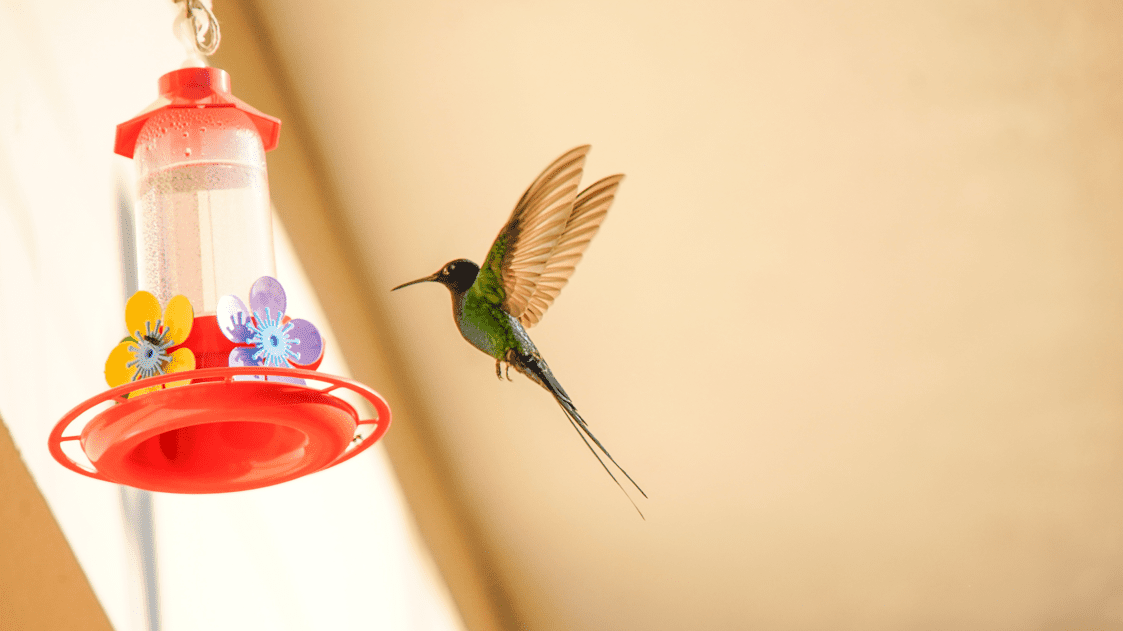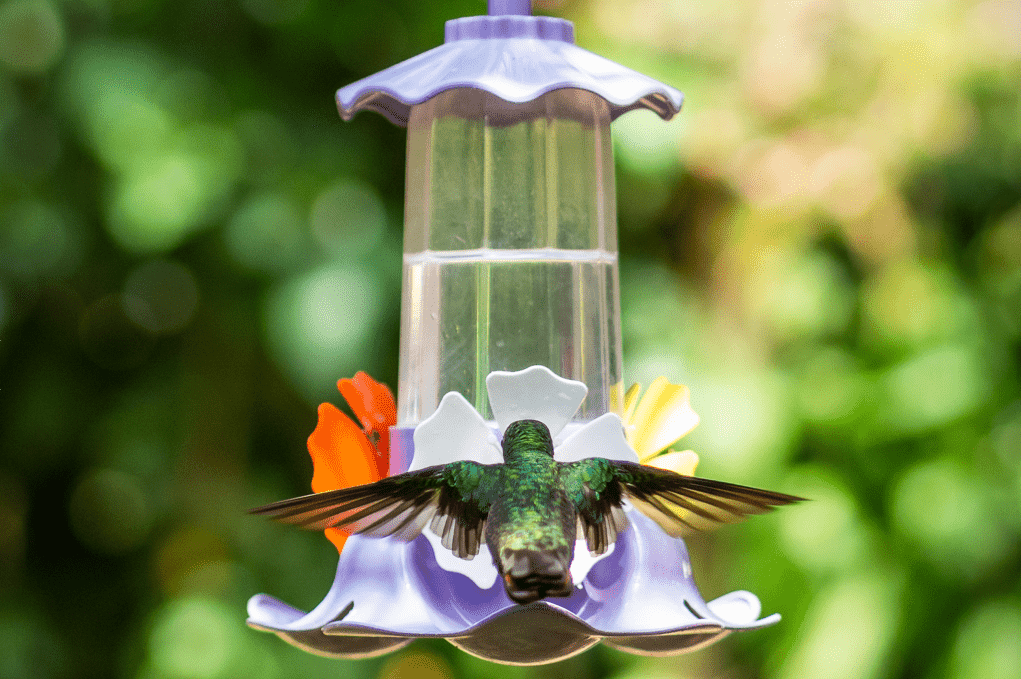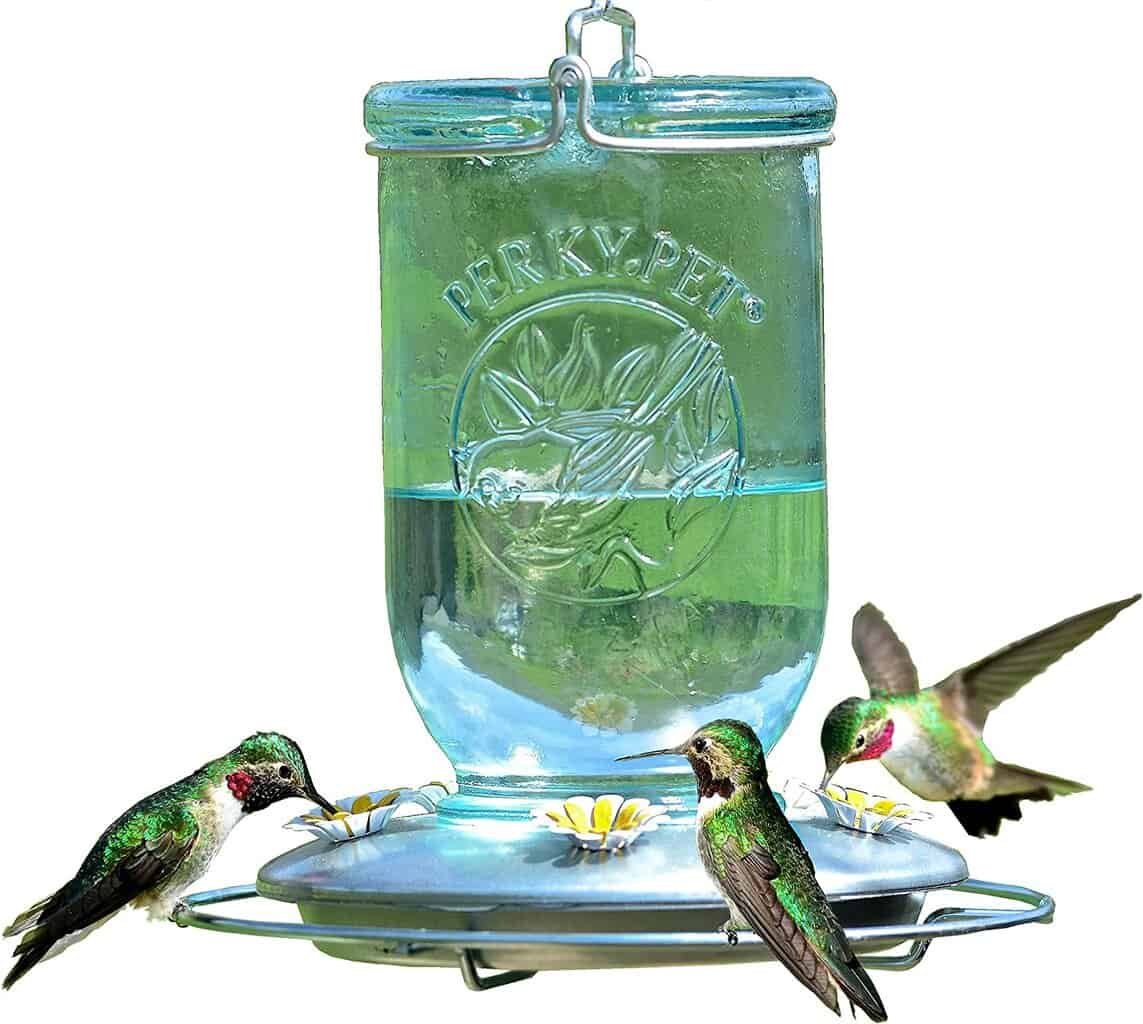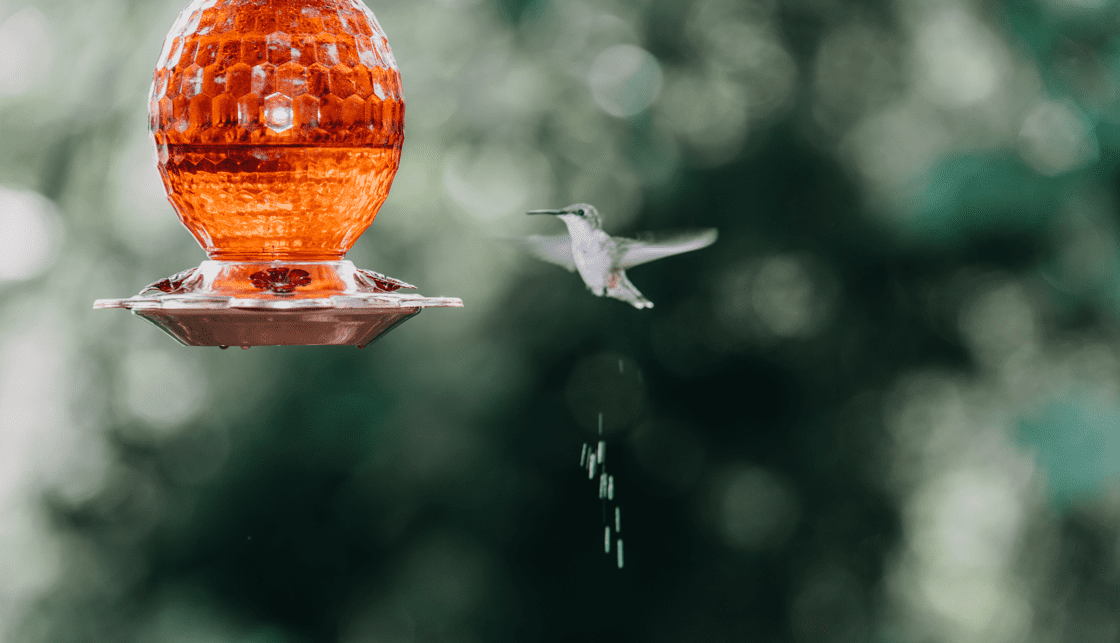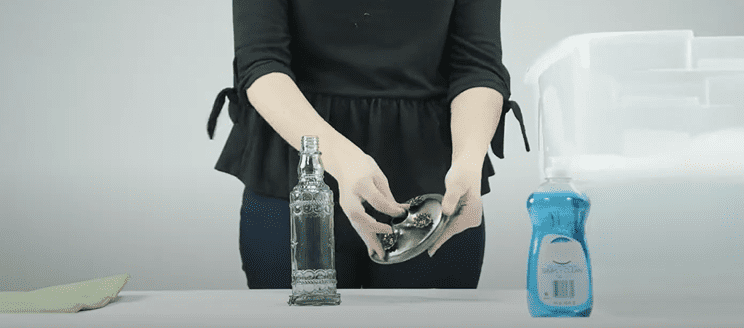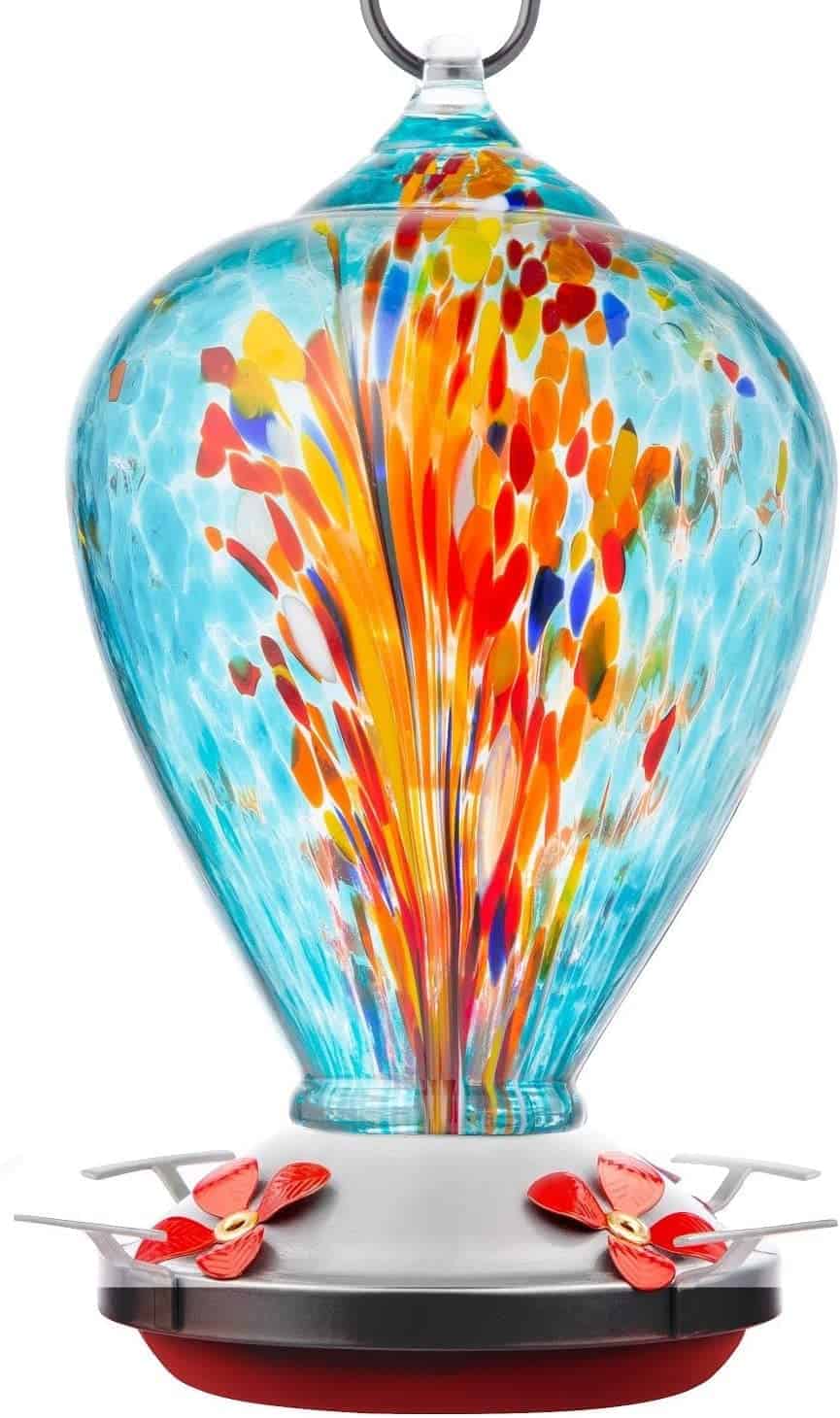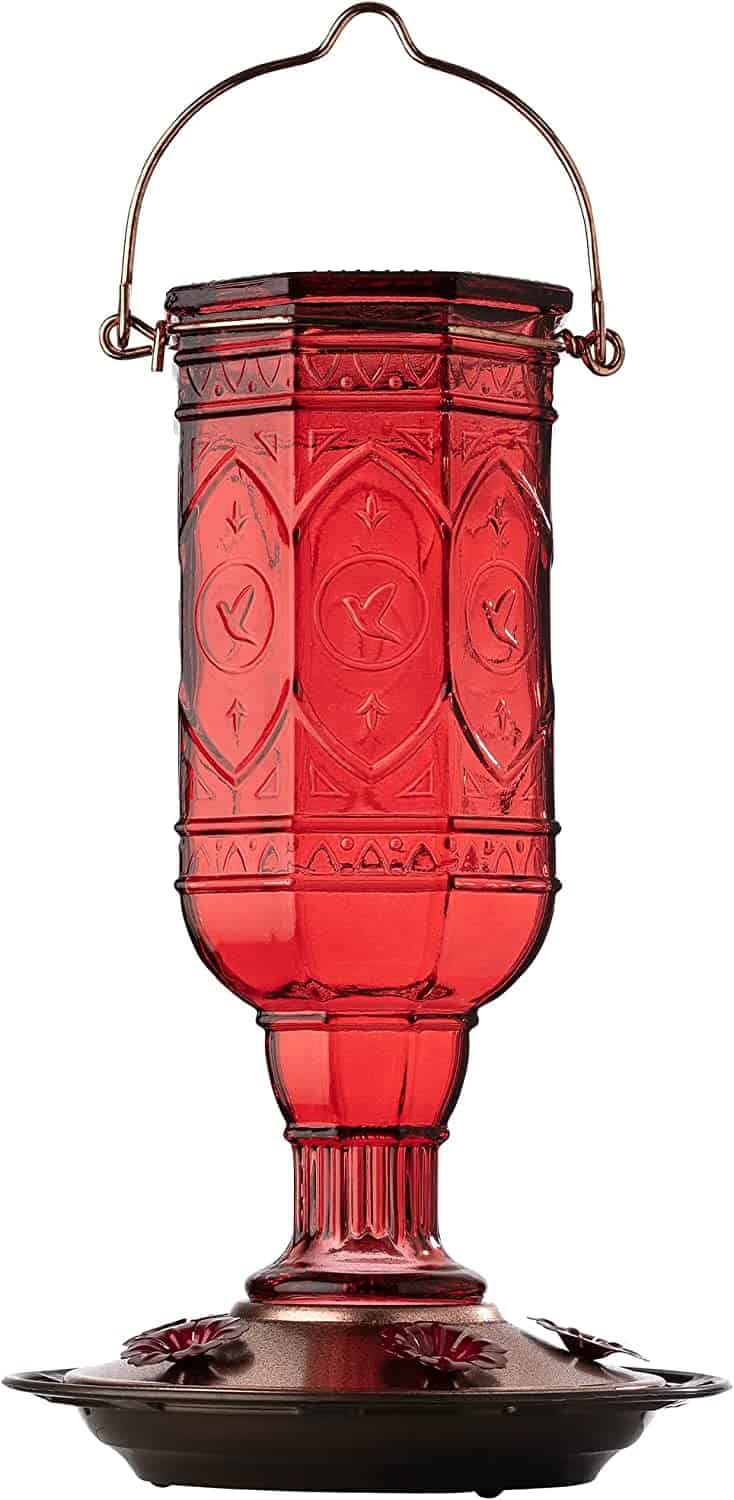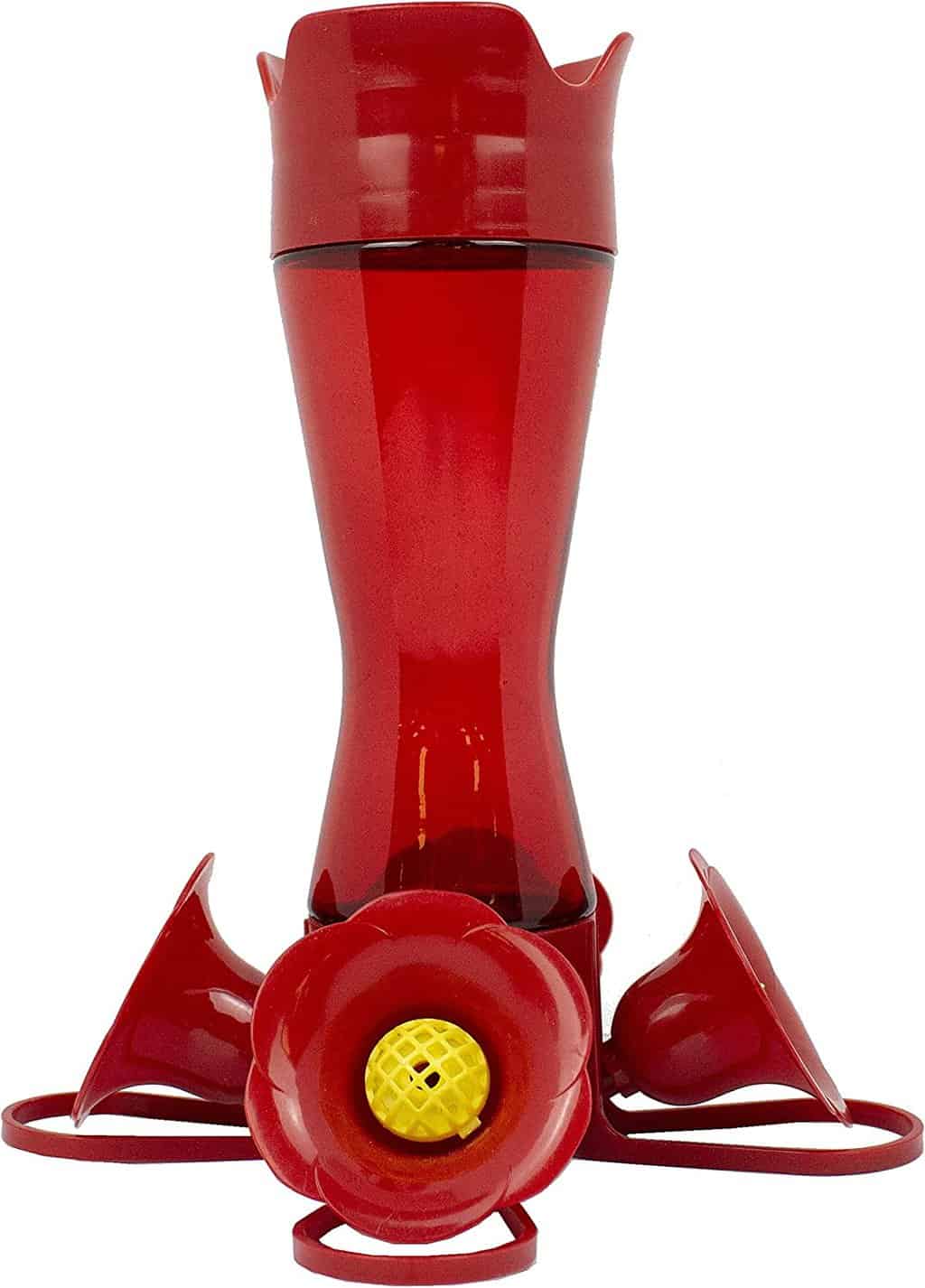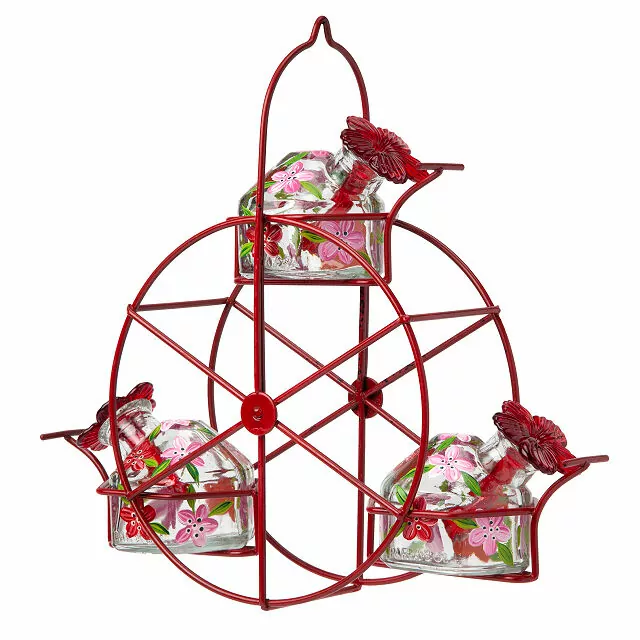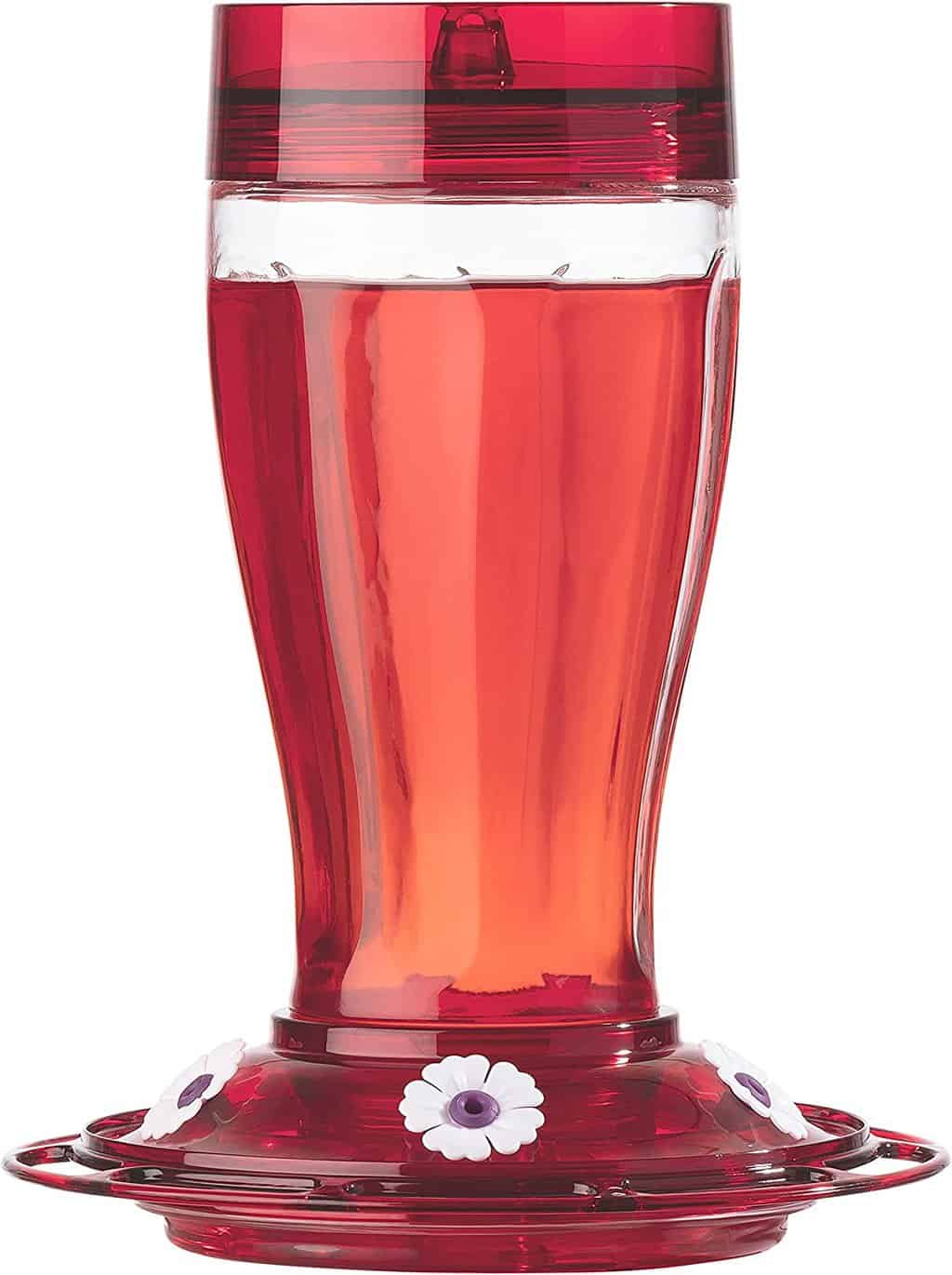- 25 Best Gourd Birdhouse Ideas to Attract and Thrill Your Feathered Friends - December 3, 2022
- Red-cockaded Woodpecker: Shaky Conservation Success Story - November 15, 2022
- Common and Migratory Woodpeckers in Michigan Guide: Where to Spot and How to Attract Them to Your Backyard - November 1, 2022
Let’s face it. Every well-organized party should provide a banquet of delicious treats for guests to enjoy to the maximum. Right?
The same applies to hummingbirds. And you might as well serve their banquet in the best glass hummingbird feeder.
These lovely, darting hummers need to feed every ten to fifteen minutes to sustain their high metabolism. And they need nectar feeders the most during the icy winters when nectar and insects are scarce. They also need nectar for sustenance in their seasonal migration.
So, like many backyard birders around the world, I always put up hummingbird feeders to ensure they always get their nectar refill. And if you are a serious birder like me, you will want the best for them.
You will find many hummingbird feeders on the market, but not all will meet your specifications. We don’t just want to attract them to our yards, but to attract them with the best glass hummingbird feeders.
Best Glass Hummingbird Feeder
I’m a hummingbird enthusiast who attracts them in droves every year. I have used different hummingbird feeders, and I have also researched them.
Among the various feeders, I prefer glass hummingbird feeders. They are gorgeous, durable, well-built, and easier to clean while attracting hummingbirds like a magnet.
My top pick glass hummingbird feeder is Muse Garden Hummingbird Feeder. It is unique, simple to assemble, easy to clean, sturdy, and big enough to contain a reasonable amount of nectar.
Factors To Consider When Buying a Glass Hummingbird Feeder
You can attract these cute little birds to your garden by planting nectar-producing plants or installing nectar-filled glass hummingbird feeders. Consider the following factors when purchasing a glass hummingbird feeder.
The Ideal Size of a Glass Hummingbird Feeder
Buy a feeder with a size ranging from sixteen to thirty-two ounces. Feeders of this size enable you to provide enough nectar for a few days with minimal waste, as you’ll feed multiple birds at once with few squabbles. Also, you won’t have to refill now and then, saving you time to clean the feeders before filling them.
A smaller size will keep you on your toes, refilling the nectar more often, and can make dominant birds chase away the others to have the feeder by themselves.
Easy to Clean Hummingbird Feeder
It is critical to clean your glass hummingbird feeders twice a week or after every three days. If you cannot clean them thoroughly, mold might grow in your nectar.
Because hummingbirds are so tiny and have such delicate organs, even little contamination in the hummer’s food can make them severely sick or kill them.
Opt for a feeder whose parts you can easily dismantle and reassemble for extensive cleaning. If the nectar storage area is narrow, it’s challenging to clean, and it can encourage mould growth. It’s advisable to settle for a bottle or bowl-shaped feeders because you can clean them as needed without struggling.
Hummingbird Feeder With Attached Perches
Some people purchase hummingbird feeders without attached perches since they enjoy watching the hummers flutter in midair. Unfortunately, this could cause these birds to burn more calories than needed, nullifying the benefit of the nectar you’ve gone out of the way to provide.
Rather than forcing them to flap their little wings while eating, look for a feeder that lets them perch comfortably on edge. You’ll still watch them from the comfort of your windows, but they won’t have to spend all their energy reserves trying to fill their bellies.
Hummingbirds Can’t Resist Red Hummingbird Feeders
Feeders may come in various colors, but purchase red glass hummingbird feeders because hummingbirds have a strong preference for red colors. However, hummers will visit any feeder regardless of the color once they know it contains the food they desperately need.
Avoid settling for yellow feeders at all costs because they can attract ants, bees, and wasps. Hummers are intelligent birds and may stop visiting crowded and contaminated feeders because they know it could be fatal.
Advantages of Using Glass Hummingbird Feeders to Attract the Hummers in Your Yard
Hummingbird feeders come in all shapes and sizes, but most will fall into two categories: glass or plastic. Each type has its benefits and drawbacks, but I’ve found that glass hummingbird feeders are significantly superior to plastic ones, especially regarding the feeder’s lifespan and the health of your birds.
Here are three reasons you should immediately switch to a glass hummingbird feeder.
Glass Hummingbird Feeders Are Aesthetically Pleasing
Hummingbirds are so elegant, colorful, and high-spirited. Watching them as they whiz all over your yard is like opening up a page of the rainforest’s finest flower book. It doesn’t matter if you’re too scared to go snorkeling in the amazon river or live on the moon. A close encounter with a hummingbird is one of nature’s great joys.
If you want to see these little dynamos at their best, make sure that your feeder is top-notch: a glass hummingbird feeder. The thick-walled glass keeps the liquid inside from spoiling faster than it would in plastic and will provide a more attractive view for those who stop by to watch.
The transparent material also reduces UV light transmission, which helps keep nectar fresh longer than darker-colored plastics. And finally, when you have guests (mainly those not used to living in an area populated by hummers), there’s no need to explain how the feeder works because it operates like any other.
You simply fill it with nectar using the included funnel, snap shut the lid, place it where you want to enjoy watching your birds, and Voila! Your friends will take photos of beautiful birds without having to explain anything.
Glass Hummingbird Feeders Are Easier to Clean
Keeping your hummingbird feeders clean is the best way to protect your birds and maintain them for an extended period. Glass feeders look great, and you can wash them in the dishwasher, making them super easy to clean. Cleaning hummingbird feeders might seem like a lot of work, but it’s crucial because it stops mold and bacteria from growing inside the feeder.
Your glass feeder is also easier to scrub because you can see all the nooks and crannies better than other feeders.
Another advantage of a glass feeder is that it’s easy to monitor how much food you’re providing, as opposed to a jar or other type of nectar container where you do not know how much nectar you have left.
Glass hummingbird feeders are available in different gorgeous designs, so it’s easy to find one that will blow your socks off without scanning the shelves for hours. They are solid, durable, and will not crack or flex like most low-quality plastic feeders.
Cleaning them is a breeze, and it is easy to sterilize them to protect the hummers from poisonous mold.
Glass Hummingbird Feeder Phenomenal Functionality
Glass hummingbird feeders are better than traditional feeders for several reasons. For one, no unsightly plastic is hanging off your house’s side. Second, glass bird feeders will last longer because they’re made from thicker glass, and there is not as much potential for leaks.
Finally, you’ll never again have a problem with ants! Ants can’t crawl up the sides of the glass like they can on any other feeder.
Disadvantages of Using Glass Hummingbird Feeders
If you’ve been enjoying the sight of hummingbirds zipping around your backyard, you might be tempted to buy a glass feeder. After all, who doesn’t love looking at these tiny wonders? Unfortunately, glass hummingbird feeders do come with their cons, just like anything else in the universe.
Glass Hummingbird Feeders Can Spill
Glass hummingbird feeders also break more quickly than other types of feeders. This can frustrate when it happens early in the season, and you do not know how long until more nectar is on hand for visitors.
Glass Hummingbird Feeders Are Costly
Glass hummingbird feeders might be pretty to look at, but they can be pricey. Things get more complicated if you’re like me and buy three or four new glass feeders yearly because they get cracked, lost, or stolen. And while the quality will differ depending on what brand you buy, all glass feeders cost more than their plastic counterparts.
You also have to keep in mind that glass is breakable. It doesn’t take much for it to shatter, so if your feeder gets knocked over (especially if there’s food), that’s it. It’s gone. It’s gone for good. That’s not just inconvenient for you but also for the birds that rely on it.
In order to ensure your feathered friends will not return to their roost on an empty stomach after gracing your property, you’ll need extra glasses in your house to replace the ones that can break accidentally.
A Glass Hummingbird Feeder Can Get Cloudy Over Time
Glass hummingbird feeders are perfect for those who don’t want to worry about their kids or pets getting the birds’ food. However, one disadvantage is that they can get cloudy over time if they’re not washed regularly.
If you want your feeder to remain shiny and new-looking (depending on the design), you’ll need to clean it more than other feeders that don’t collect gunk as quickly.
If your homemade hummingbird nectar is becoming cloudy with little bubbles near the edges, the nectar has gone bad, especially if you have had it for a day in hot weather. The bubbles and cloudiness are sure signs of mold forming, and it’s time to replace the nectar.
How to Clean Glass Hummingbird Feeders
Keeping your glass feeders clean is a crucial part of hummingbird feeding. Hummingbirds are intelligent creatures and prefer drinking from a continually clean feeding station as it is beneficial and healthier for them.
Whenever the nectar seems cloudy or milky, discard it and clean your feeder. Note that the higher the humidity, the faster the food spoils. When the nectar becomes milky, it tastes funny to the winged wonders, and they will be happy to move on to another garden.
Mold could grow in the hummer’s food and cause a fungal infection. But keeping the hummers well-fed and safe is possible by following the steps below when cleaning the glass feeder.
Step 1. Empty the Feeders
When the time for cleaning the feeders comes, begin by emptying the glass bottle and flushing it with plenty of hot water to remove spoiled leftovers. Never reuse the nectar as it spoils quickly, particularly in hot weather. If the hummingbirds are not emptying the feeder, do not completely fill the feeder to avoid wasting the precious food.
If you are unsure if they’ll empty the feeder, start small and increase the amount with time.
Step 2. Disassemble the Feeders
Dismantle the feeder as much as possible to make cleaning a lot easier. That’s why I recommend buying a feeder whose parts you can easily take apart. Kindly note that the more features a feeder has, the more time it may take to dismantle and reassemble the pieces for thorough cleaning.
Remove the feeding ports plus bee guards to enable you to clean all of the nooks and crevices meticulously.
Step 3. Soak all the feeder Parts
To make a mild detergent, mix warm water and dish soap in a bucket or sink and swirl. Put all your feeder parts in this solution and soak them for one or two hours. This helps to loosen the traces of nectar and all mold buildup on the feeder’s interior, making it effortless to scrub.
Step 4. Scrub all the Feeder Parts
Scrub the glass feeder with a bottlebrush or cleaning mop. Be sure to clean the interior of the feeder and base thoroughly. Get rid of all nectar residue and pay close attention to areas with mold. If the feeder’s neck is small and you can’t get to it with a mop, or if it is filthy, add one spoon of rice and a dab of dish soap.
Add water and shake the bottle vigorously. Scrub all the parts individually until you are satisfied that they are sparkling clean.
Step 5. Rinse the Parts
Empty your homemade cleaning solution after you’ve finished scrubbing. Rinse the feeders with cold water to wash away any foam or dirt. Hummingbirds will be offended if their food tastes like soap.
Then, thoroughly rinse your feeder with clean cold water. If you clean the feeders this way after every two days, each subsequent cleanup will be easier than the last.
Step 6. Reassemble the Feeder
Let the feeder pieces air dry entirely in your dish rack or towel, reassemble the feeder and refill it. Sit back and enjoy the company of happy hummers.
Glass Hummingbird Feeder Recommendations
One of the best ways to attract hummingbirds to dazzle your backyard is to install glass hummingbird feeders. I’m a hummingbird enthusiast who doesn’t miss an opportunity to feed the hummers when they migrate in search of nesting grounds.
After the flock has left, I leave my feeder out for several weeks to allow the occasional dallier to stop by for a sugar booster.
I left no stone unturned in researching and testing different glass hummingbird feeders. I rated them based on ease of use and cleaning, reservoir size, and capability to withstand various weather. Here are the ones that blew me away.
1. Muse Garden Hummingbird Feeder
I love the brilliant design of this hand blown glass feeder. It is stunning. During the day, it appears to have a light inside when it reflects sunlight causing people to wonder if it is battery-powered. I also like it because of its sturdy framework, which is simple to put together and take apart.
Its price is reasonable even if you buy a couple of them. So, you do not have to break your bank to feed the hummers. It won’t be long before you’re flooded with migrating hummers because you’re prepared for them with this feeder at hand.
Pros
- it‘s simple to clean because you can easily dismantle and assemble hassle-free
- Its simple to hang
- It comes with a simple brush to clean the holes
- It comes with an ant moat
Cons
- It can easily leak at the base, especially if you don’t tighten it properly.
2. Red Jewel Hummingbird Feeder
If you want a red glass hummingbird feeder that’s pretty to look at, your search could end with this product.
Hummers are nature’s jewels, and you could use this glass feeder to attract more hummingbirds. I love the exquisite, antique-style eight-sided red glass bottle with a nectar capacity of twenty ounces.
This ensures an abundance of food to keep hummers happy and returning for more! Its broad bottleneck opening and removable flat base make it simple to refill and clean.
However, don’t put this feeder in your dishwasher to clean it because the high temperatures could permanently destroy the feeder parts. Also, dishwashing is not ideal as it might not wholly disinfect any bird diseases.
There may be some discolorations on the bottom of the metal disk, but no foreign materials or rust will enter the nectar. In areas where squirrels roam, it will survive the drop and continue to work as if nothing had happened.
Pros
- It’s beautiful, and the hummers adore it
- Its quality and price are a pleasant surprise as the glass is thick and sturdy
- It’s easy to fill the nectar and clean
- It has excellent perches for the hummers to perch when feeding
Cons
- Its large holes allow the hornets to access the nectar, but it’s not a biggie since the hummers get to fill their bellies.
3. Hand Blown Illuminated Feeder
This top-quality hummingbird feeder is made of glass and features a solar-powered LED. You can use it as a feeder in the daytime and as a decorative piece at night. It is made of colored glass, ensuring the colors remain bold and lively for years.
The hanging basket has elegant leaf perches to enable hummers to perch when feeding. This feature increases the feeding time considerably, leading to more bird watching.
With this feeder, you can feed hummers of all sizes because its domed lid ensures enough space for hummingbirds’ tongues regardless of the species. Its flower-feeding ports are made of die-cast aluminum and will not rust.
On top of that, all parts of this feeder are dishwasher-safe. So, you can keep your feeder clean without using special cleaning apparatus. Remember that the LED unit is not dishwasher safe.
Pros
- It is gorgeous regardless of the time
- The hummers prefer it over most feeders
- It has a wide opening, so it is easy to clean and refill thoroughly.
- It sits securely in the hanging frame, making accessing the feeder easier as you don’t have to take the structure down.
Cons
- The holes are not deep enough- you must fill them to the brim for the hummers to reach the nectar.
- You can’t see the nectar level
4. Perky-Pet Pinchwaist Hummingbird Feeder
A hummingbird feeder should be simple to fill and clean while providing a welcoming environment for hummingbirds. The Perky-Pet Pinchwaist Hummingbird Feeder accomplishes this with an appealing design that attracts the hummers in flocks. The feeder has four ports with four excellent perches.
The bright red color and floral ports attract the hummers like crazy, and the four ports allow several birds to feast simultaneously. It has bee guards to keep ants and wasps from stealing hummingbird nectar.
I noticed that the nectar chamber does not hold as much food as other feeders. Remember that hummingbirds eat a lot to keep up with their high metabolism despite their small size. So, if you use this feeder, you must be keen to refill the nectar regularly to ensure that your visitors are getting what they came for.
Besides, this feeder is easy to clean as it has a detachable base and a large opening for easy nectar replenishment. The feeder is a well-designed addition to any garden. It gives you excellent value for your money without leaving a massive dent in your wallet.
It may be challenging to clean the feeder as the small yellow balls may pop open, and you have to scrub them with a bottle brush. However, if you love the hummers and want to keep them alive and healthy, you won’t mind taking the time to reassemble and clean all the parts extensively.
Pros
- It has several feeding ports.
- It’s available in different colors.
- It keeps wasps out
- Simple to fill and clean
Cons
- Its reservoir is small if you want to feed a flock of hummers.
5. Ferris Wheel Hummingbird Feeder
Most glass hummingbird feeders have a pretty typical appearance, but if you need one that can stand out from the crowd and etch its name among the great in your patio or yard, look no further. This unique hummingbird feeder is shaped like a Ferris wheel and features three handblown glass containers where hummers can take nectar.
The glass feeder has a solid metal frame with three seats, each with a perch and a red flower-shaped port. Remember that hummingbirds are very territorial. The feeding ports are reasonably spaced to create enough room for the hummers to grudgingly share the spoils without getting on each other’s throats.
These bottles are hand-painted with beautiful flowers for added flair. However, they take longer to wash and refill than a standard feeder because of their intricate design.
Pros
- You can feed three birds simultaneously
- It’s made of thick, sturdy glass, hence durable
- It’s a unique patio or garden addition to individuals with a knack for uniqueness
Cons
- It’s challenging to clean
6. More Birds Big Gulp Hummingbird Feeder
Suppose you are lucky enough to have hundreds of hummers visiting your locality. In that case, they may consume many ounces of nectar daily, leaving you with no option other than refilling the feeder several times per week.
Refilling the nectar can take up a considerable chunk of your time if you have set up many feeders because you have to wash each feeder thoroughly before filling. To carry on with insatiable hummers, you need a bigger feeder, such as the More Birds Big Gulp.
The feeder has a whooping capacity of forty ounces, enabling you to feed many birds for a while without taking down the feeder, cleaning it extensively, and refilling it. You only need to pay attention to the color of the nectar.
If it becomes cloudy or milky, regardless of the time it’s been up for the birds, empty it, clean it, and refill it. I
It has five feeding stations, each with a perch to let the birds perch when feeding if they want to, resulting in more feeding time and increased time for watching.
Its glass reservoir has a huge mouth and flat top for quick filling and simple cleaning. It has an ant moat on the top to keep ants and other insects out of the precious nectar.
Pros
- It has a big reservoir to feed a lot of birds without refilling it often
- It has several well-spaced feeding ports to let hummers enjoy nectar without squabbles
- It’s so sturdy that it survives raccoons and big drops
- It comes with an ant moat to keep insects at bay
- It does not leak
Cons
- You can only use it if you are expecting a lot of hummers
How To Fix Leaking Glass Hummingbird Feeder
When you’re outside, are you flocked by curious little critters? When resources run low, do they stare into your windows and hum harshly?
Feeding hummers can be fun, but when the feeders become sticky, spilling, or leaking, problems can arise for you and the birds.
You waste the nectar and attract unwanted ants, wasps, and bees to compete with hummers for food. Also, it results in stubborn stains on your deck or patio, sickness, and odors, which could attract deer, raccoons, mice, or bears.
A minor leak is not a problem now and then, but you must stop the flow when it develops into a continuous drip or a more significant leak. You can minimize hummingbird feeder leaks and eliminate drips with a few simple steps. Here’s how.
Position the Feeder to Prevent Accidental Tipping
Keep feeders away from busy walkways and paths. Avoid hanging your feeders in places with solid cross breezes, which could cause wobbling and tipping. An unbalanced feeder is more susceptible to leaking.
Clean your Glass Feeders to Help the Parts Seal Appropriately
Clean the Feeders regularly with warm water and good quality bottle brushes.
Cleaning feeder parts helps them to seal correctly, preventing leaks. For more deep cleaning, use a vinegar rinse once in a while. Rinse with hot water thoroughly.
Routinely Inspect Feeders for Damage
Chips, holes, splits, and warping in your feeder’s base or bottle can cause seals to fail and leaks to occur. Repair the damages if possible, or replace the parts if needed. Get another feeder if the damage is beyond repair.
Keep the Feeders in the Shade
As the nectar and air in the bottle heat up in the sun, the growing pressure forces leaks to increase. Keeping the feeder in the shade will keep the nectar cool and minimize leaking because the pressure in the bottle won’t grow.
The Best Glass Hummingbird Feeder Guide: Frequently Asked Questions (FAQS)
Answer: Hummers prefer naturally warm nectar from flowers because its scent is more potent. Also, cold nectar could devastate their health, lowering their body temperature to dangerous levels and causing metabolism issues. They wake up hungry and cold and need something warm to fuel their lifestyle.
Answer: The correct ratio of sugar to water for hummingbirds should be 1 part sugar to 4 parts water. You should boil the mixture until it completely dissolved the sugar and let it cool before putting it in clean, air-dried feeders.
Avoid using brown sugar or honey instead. Use white cane sugar only. Avoid red dye like the plague, as it could harm the little critters. Change the nectar twice a week or when you notice it is turning milky or cloudy, and clean the feeders thoroughly before refilling. Keep extra sugar water in the fridge for two weeks to ensure you serve only fresh, nutritious food.
Answer: The best time to stop feeding hummingbirds depends on the climate, location, migration, and individual considerations. However, the rule of thumb is to keep feeding the hummers as long as they come to your feeders. Male hummingbirds are the first to leave; they leave in summer, months before the chicks and the females.
Continue setting up the feeders until you no longer see any hummer in your yard. Remember to keep the nectar from freezing in winter and change it every three days or when it turns milky or shows other signs of contamination.
The Best Feeders for Hummingbirds
Indigenous flowering plants are the top source of nectar for hummers, but a good feeder is crucial, especially during the treacherous journey of hummingbird migration. A glass hummingbird feeder is one of the best options for feeding the little birds.
Although they are heavier than their plastic counterparts, they are easier to clean because some are dishwasher-safe. Also, they are durable and available in different sizes and designs. It’s critical to keep a glass hummingbird feeder clean.
Feeders can quickly become infested with black mold, and if the hummers catch it, they die slowly from starvation since their tiny throats swell and they can not eat or drink. If you will not clean your feeders, it’s best not to feed the birds.
References
- https://www.wbu.com/essential-tips-hummingbird-feeders/
- https://www.thespruce.com/tips-for-feeding-hummingbirds-386616
- https://chirpforbirds.com/how-to/the-ultimate-guide-to-hummingbird-feeding/
- https://www.pinterest.com/pin/908530924798465050/
- https://morebirds.com/blogs/news/tips-for-choosing-the-perfect-hummingbird-feeder
- https://journals.sagepub.com/doi/10.1177/1940082919878960
- https://www.ucdavis.edu/news/most-microbes-hummingbird-feeders
- https://zoologia.pensoft.net/article/13228/
Looking for more interesting readings? Check out:


